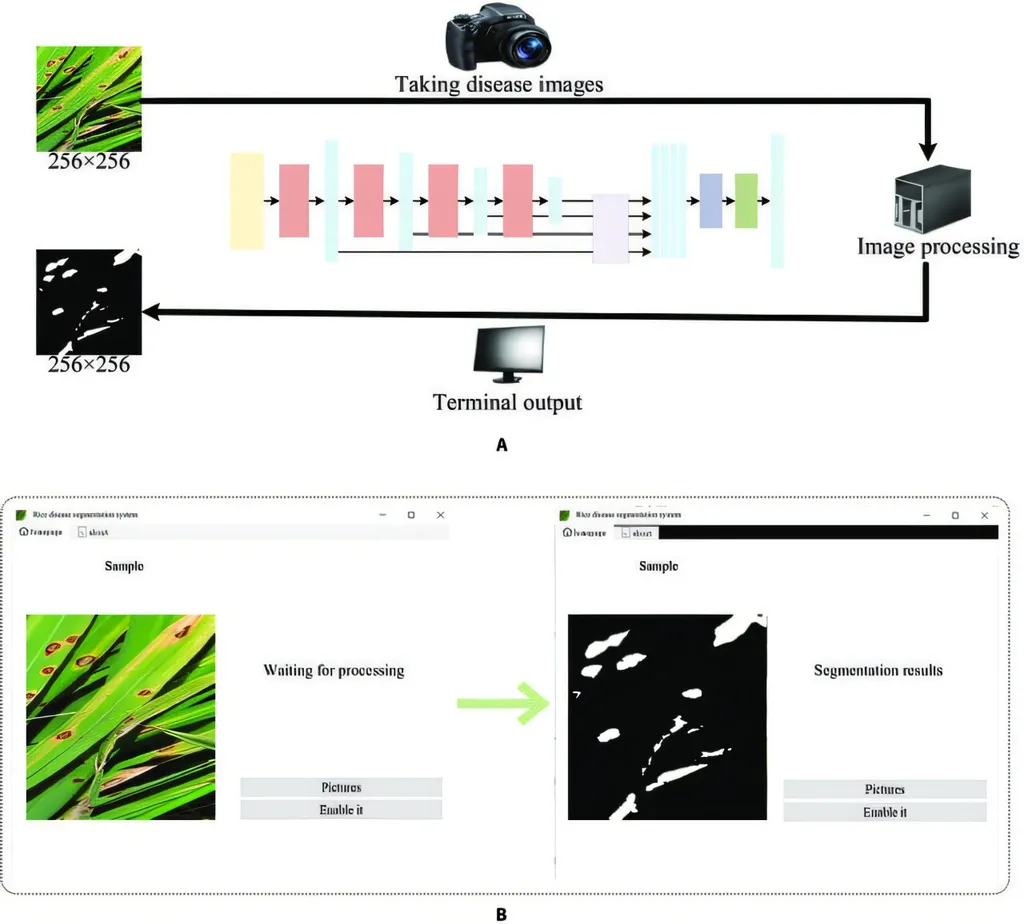In the heart of China’s Hubei province, a team of researchers led by Linyang Yan at Hanjiang Normal University has developed a groundbreaking model that could revolutionize rice pest detection, offering significant benefits to the agricultural sector. Their work, recently published in the journal *AIP Advances* (translated from Chinese as “Progress in Physical Sciences”), introduces an intelligent detection framework that promises to enhance crop yield and quality by addressing the persistent challenge of rice pests.
Rice pests are a formidable adversary for farmers worldwide, threatening both the quantity and quality of harvests. Traditional detection methods, often relying on manual inspection, are not only time-consuming but also subjective and inefficient. “These methods fail to meet the demands of modern agriculture, which requires intelligent, real-time, and high-precision detection,” explains Yan.
To overcome these limitations, Yan and his team have developed a rice pest detection model based on an improved YOLOv11n. This advanced model introduces several innovative features designed to enhance its performance in complex pest environments. The C3k2-ConvFormer-CGLU backbone structure, for instance, integrates local convolution and a lightweight attention mechanism to improve fine-grained feature expression. Additionally, the ContextGuideFPN module optimizes multi-scale feature fusion through context guidance, while the C2DAttention module enables dynamic attention to key areas and redundancy suppression.
The model was trained and tested on a self-built dataset containing six typical rice pest species. The results were impressive, with the model outperforming existing mainstream lightweight models in terms of accuracy, recall rate, and mean average precision (mAP). With an [email protected] of 95.5%, the model achieves an optimal balance between detection performance and deployment efficiency, maintaining a low parameter count of 2.49M and a high inference speed of 416.6 FPS.
The implications of this research are significant for the agricultural sector. By providing a more efficient and accurate method for detecting rice pests, the model can help farmers to take timely action, reducing crop loss and improving yield. This, in turn, can contribute to food security and economic stability in regions where rice is a staple crop.
Moreover, the model’s adaptability and practical application potential in complex pest detection scenarios make it a valuable tool for agricultural researchers and practitioners alike. As Yan notes, “Our model demonstrates strong adaptability and practical application potential in complex pest detection scenarios.”
The research published in *AIP Advances* not only addresses a critical challenge in agriculture but also paves the way for future developments in the field. By integrating advanced technologies like artificial intelligence and machine learning into agricultural practices, researchers can continue to enhance crop yield, quality, and sustainability. This work is a testament to the power of interdisciplinary research and its potential to drive innovation in the agricultural sector.

